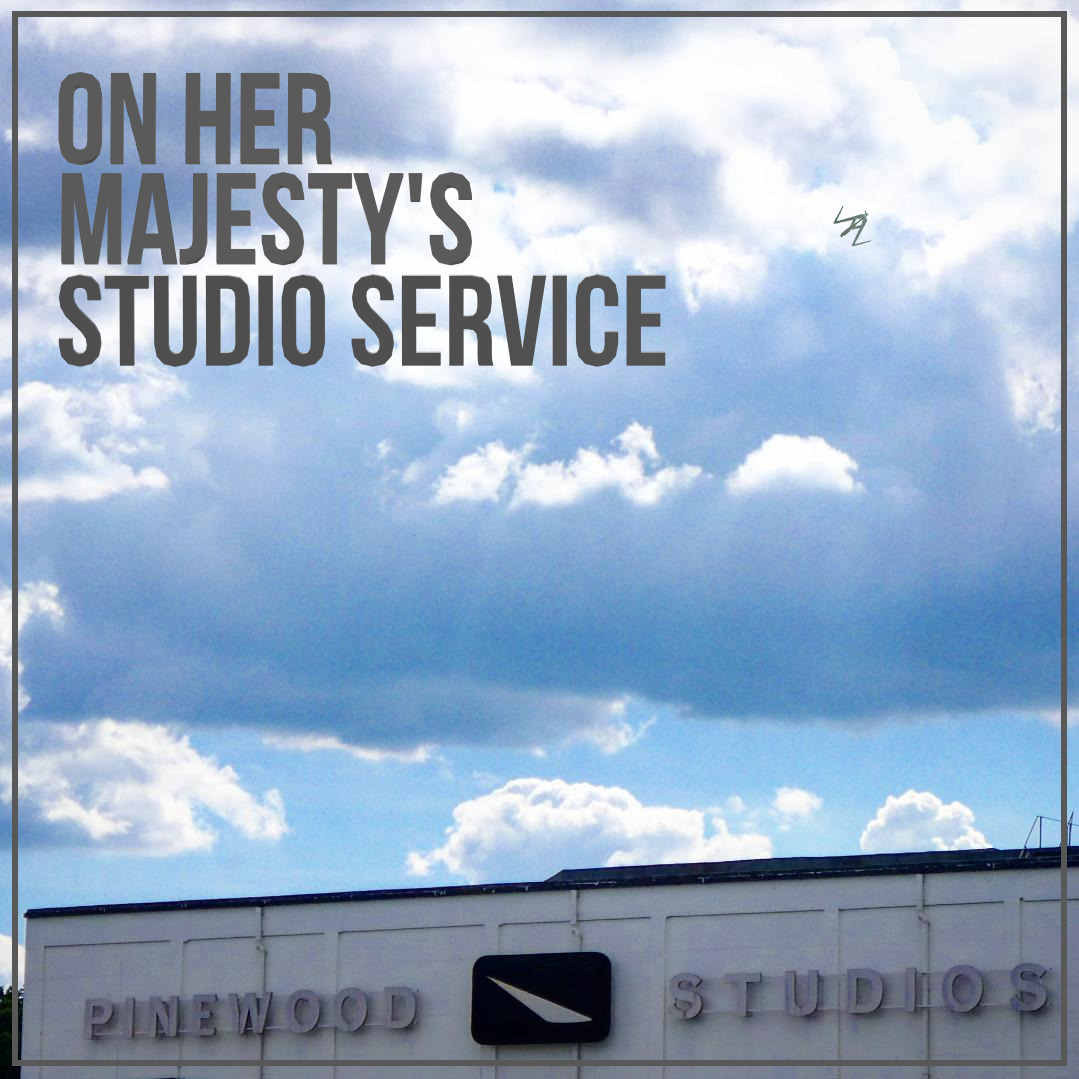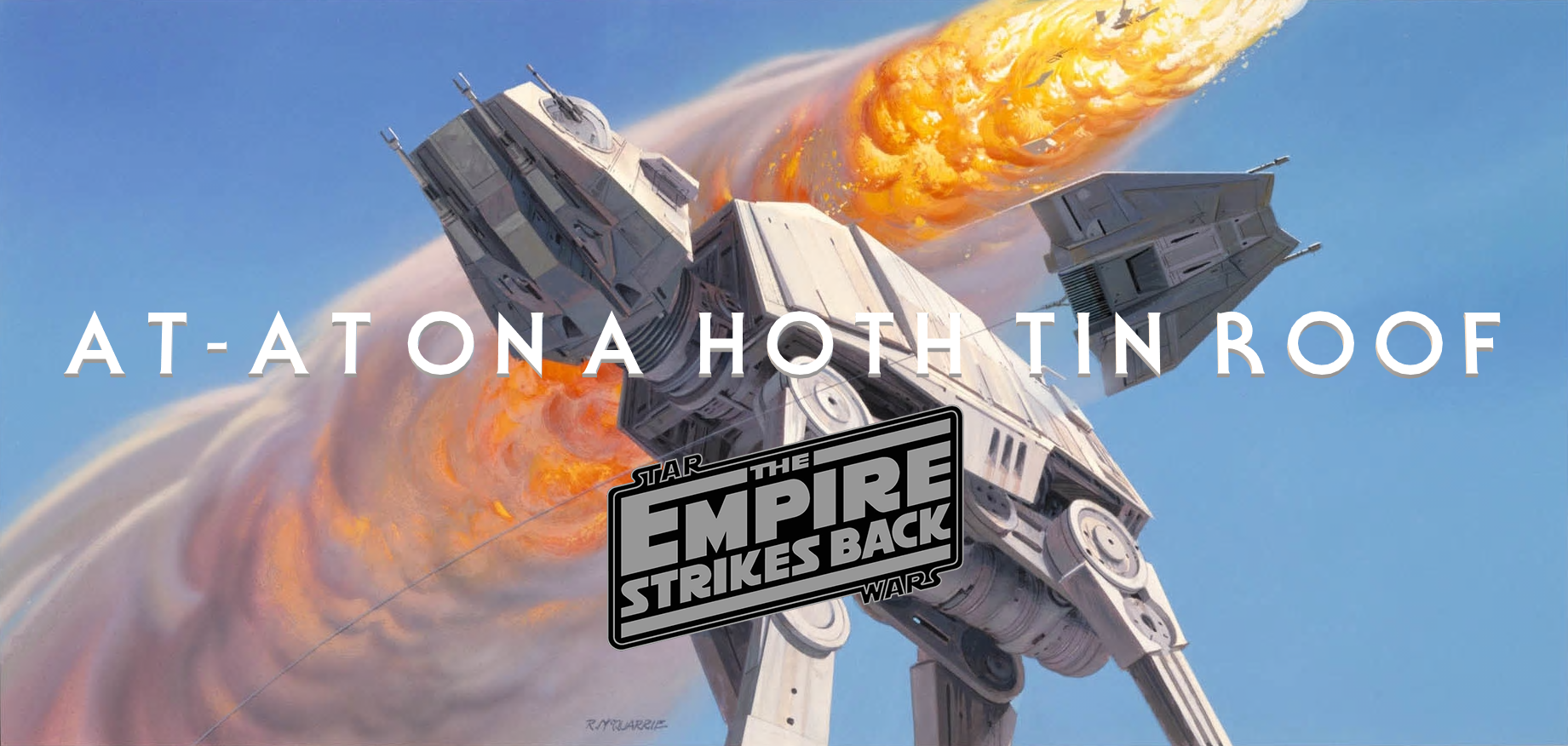
Tag: Star Wars

Remember when a dark time for the Rebellion meant a bright time for sky kids at Christmas?

Watching the skies – alternative artwork by Scott Woolston.

In the month Watching Skies finally lands its mothership in a Californian forest of Star Wars and Spielberg nostalgia, author Mark O’Connell looks at the onscreen l Continue reading
 There is a refreshing honesty to Alec Mills’ writing and it is an honesty predicated on making no bones of not being honest. Part compelled by the books that have emerged from his film industry peers and pals, and part inspired by realising (and believing) his career as one of Britain’s key camera operators and directors of photography will have hold enough anecdotal momentum for the retirement project of penning a book, Shooting 007 And Other Celluloid Adventures pulls a compelling focus on one of the most interesting periods of British mainstream cinema.
There is a refreshing honesty to Alec Mills’ writing and it is an honesty predicated on making no bones of not being honest. Part compelled by the books that have emerged from his film industry peers and pals, and part inspired by realising (and believing) his career as one of Britain’s key camera operators and directors of photography will have hold enough anecdotal momentum for the retirement project of penning a book, Shooting 007 And Other Celluloid Adventures pulls a compelling focus on one of the most interesting periods of British mainstream cinema.
The self-deprecating “young fool” that so many of Mills generation purport to be – the likes of Peter Hunt, Lewis Gilbert, Terence Young, Bryan Forbes and John Glen – are also key participants in some of British and Western cinema’s celluloid landmarks. Born in 1932, Mills’ economically details how his film and television career was a gem-specked array of luck, fortune and hard bloody work. From a clapper loader for John Huston in Moby Dick and Powell and Pressburger’s The Battle of The River Plate (both 1956) to focus pulling for Joseph Losey, Ken Annakin, J Lee Thompson and Michelangelo Antonioni (1966’s Blow Up) and then eventually becoming camera operator on The Saint, Where Eagles Dare, Carry On Cleo, Chitty Chitty Bang Bang, The Private Life of Sherlock Holmes, Gold, Shout At The Devil, Aflie Darling, The Awakening and Eye Of The Needle – Alec Mills has been either partly or wholly responsible for more than his fair share of iconic cinematic imagery. But like all folk fortunate enough to call this world their life, it is the relationships, dramas, learning curves (always check whether a “gelatin filter” has slipped or not) and friendships that mark the successes, not the box office tallies for the suits in Burbank and Wardour Street.
And it is not all Home Counties back-lots and camera dramas by the tea urn. Mills details working for Disney on such “fantasy land” pictures as Swiss Family Robinson (where Mills made the Disney football team under “team manager” John Mills), Greyfriars Bobby and The Prince And The Pauper – an era of photography one could argue is later evident in the rich, bright and near-Technicolor hues of the two Timothy Dalton Bond movies Mills lensed in the 1980s. And of course he was the camera operator on that barely noticed b-movie by the name of Return of the Jedi (1983). Mills uses that particular experience to kindly suggest none of us get on with everyone in life, and just how damning a cold shoulder can be on a film gig that can last for months. Likewise, Mills explores the tempers and “war of words” with director John Guillermin on the set of 1978’s Death on the Nile, only to be curiously called up again by the director in 1986 to lens his doomed King Kong Lives (“was he taking this opportunity to settle an old score and sack me?”). For some reason the line “Linda Blair arrived from Hollywood to complicate matters” is an intriguing bon mot and indicative of the book’s honesty and swift ease in moving through its subjects.
It is around this point in Shooting 007 that Mills recounts the life luck of Bond director John Glen urging Mills to come out of semi-retirement to camera operate Octopussy in 1982. Having been an operator five times for Eon Productions and the Bond movie-machine, Mills was subsequently invited twice to perform director of photography duties on Timothy Dalton’s Bond bullets, The Living Daylights (1987) and Licence To Kill (1989). It was an invite initially delivered by Ken Adam on the set of King Kong Lives and one Mills proudly notes, “I was lost for words; this had to be the most exciting time since I came into the industry in 1946”.
The encouragement and support of his wife Suzy does not go unnoticed – almost acting as Mill’s very own light meter, checking for a truth and a through-line of narrative. When Mills is in doubt at his own recollections and the need to even discuss close [and not so close] colleagues, a curious interaction between author and his use of stories peppers the writing. There are frequent junctions in Shooting 007 buoyed up by the author questioning why such and such a detail is even necessary. Intentional or not, it makes for an absorbing, almost too apologetic biography. From WWII childhood to dashing from afternoon trips to the pictures to make evensong and that first tea boy / clapper loading apprenticeship at Carlton Hills Studios (where Mills had already joyously worked out his first wage packet represented “twenty one visits to the cinema, sitting in the front seats!”) via an asthma-induced and maybe welcome “discharge” from the Navy in the early 1950s all to a subsequent and timely film industry fortune in the guise of a nine year apprenticeship under famed cameraman Harry Waxman BSC (Father Brown, The Roman Spring of Mrs Stone).
And of course it makes an apt requirement that a book about a director of photography should feature a rich array of photographs, with Mills’ metaphorical light meter checking throughout for matching anecdotes and prime conditions to discuss and highlight (including some of his own on-set photographs). From a great early snap of Mills standing in for Octopussy’s Kristina Wayborn with a jokily amorous Roger Moore (complete with Mills clutching the Faberge egg behind his back) to the rich roster of many an unseen Bond-on-set still from the Eon/Danjaq archives, globe-trotting camera gigs for Swiss Family Robinson, candid shots of Peter Sellers perched atop a king’s throne nursing a brandy and having an Aboriginal tracker whip in half a cigarette in Mills mouth whilst shooting Rank’s Robbery Under Arms, Shooting 007 is a personable tour of cinema peppered with what ‘Camera A’ doesn’t see. Or wouldn’t see.
A welcome addition to that generation of post-war film-makers and creatives who possibly bridged the old and the new, the old school way of making pictures versus the world of new technologies, new management structures and story needs, Shooting 007 And Other Celluloid Adventures is a brisk, upfront but detailed read about a very different time of British-based cinema.
Shooting 007 And Other Celluloid Adventures by Alec Mills is published now by The History Press.




